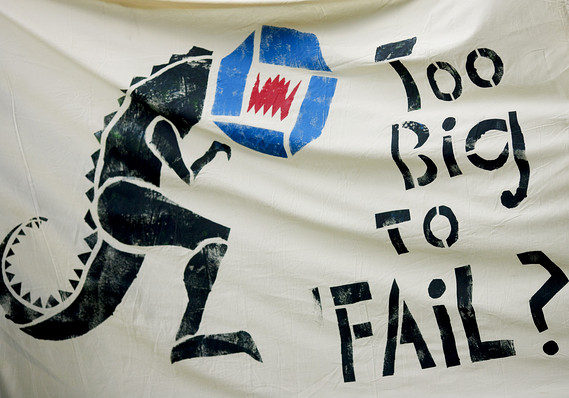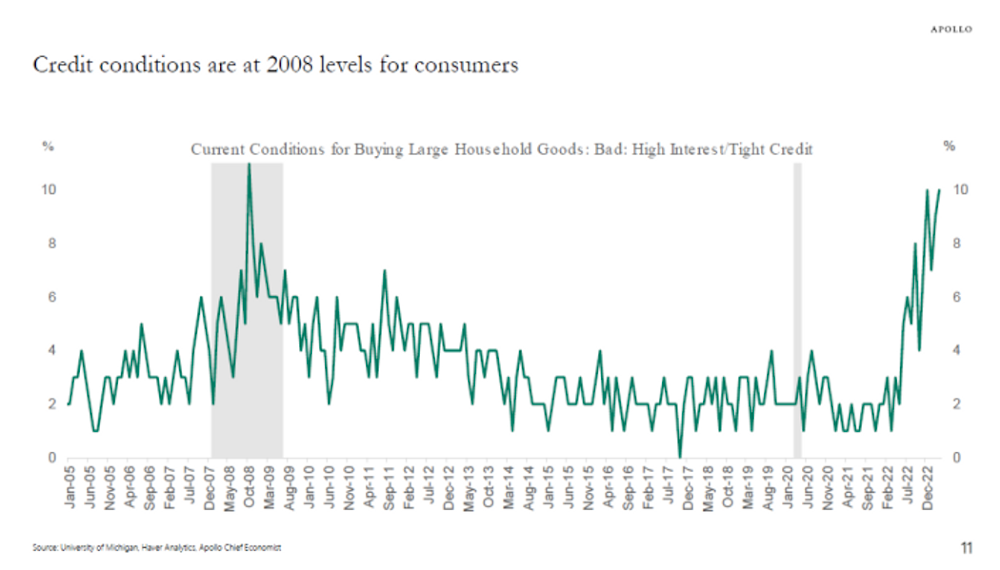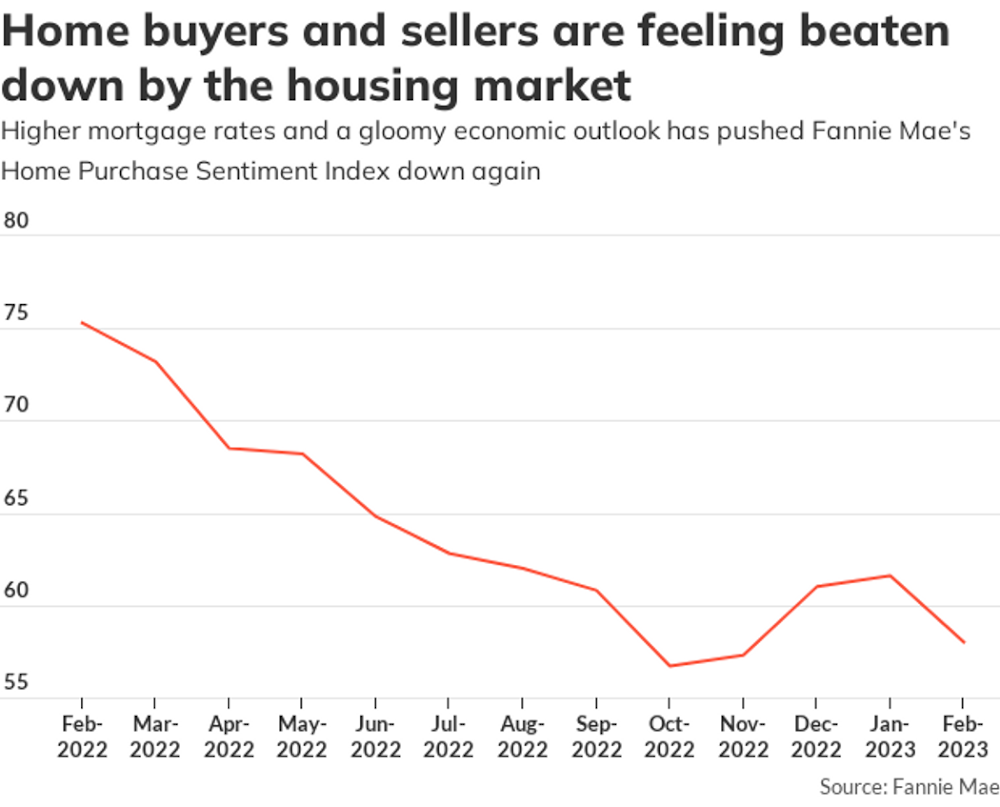NEW YORK (MarketWatch)
U.S. stocks fell significantly for a second straight day Wednesday, with the Dow industrials in danger of suffering triple-digit declines in back-to-back sessions for the first time in eight months as crude oil topped $100 a barrel.
Stocks broadly speaking took it on the chin as the price of crude-oil futures touched $100 a barrel for the first time since October 2008, as violent conflict in Libya threatened exports, especially if that upheaval extends to further oil producers in the region. Get the details of crude oil’s rise.
Oil for April delivery ended at $98.10 a barrel, up $2.68, or 2.8%, after hitting a high of $100.01 during the session.
On Wednesday, Col. Moammar Gadhafi reportedly maintained control of Libya’s capital, but large chunks of the eastern portion of the country remained out of his control as the effort to end his more than 40 years in power reached additional Libyan cities.
“The strife in Libya carries implications that extend well past its borders and clouds the immediate-term outlook for the investment markets,” noted Kevin Giddis, executive managing director and fixed-income analyst at Morgan Keegan.
A day after its biggest drop since Nov. 16, the Dow Jones Industrial Average tumbled as much as 107,01 points, at 12,105,78.
H-P shares fell 10% after CEO Leo Apotheker projected revenue for the current fiscal year would be below earlier expectations.
Libyan crisis rocks oil marketsOil markets are closely watching Libya after Tuesday's events pushed the price of a barrel of oil to its highest level in two years.
After a 2.1% drop Tuesday that marked its worst decline since Aug. 11, the Standard & Poor’s 500 Index was recently off 4.98 points at 1,310.46. Of the S&P’s 10 industry sectors, energy performed best, with Cabot Oil &Gas Corp. up 12%, Chesapeake Energy Corp. rising 6.7% and Range Resources Corp. climbing 7.4%.
Heavy users of energy were among those hit hardest, with shipper FedEx Corp. down 4% and passenger carrier US Airways Group Inc. off 6.4%.
The Nasdaq Composite Index declined 33.33 points to 2,722.99
Decliners outpaced advancers nearly 2-to-1 on the New York Stock Exchange, where volume topped 1 billion at 3:30 p.m. Eastern.
Composite volume neared 5.1 billion. The losses continued after a report showing existing-home sales rose to 5.36 million in January from 5.22 million in December.
Wall Street’s two-day decline marks its second sizable retrenchment this year; the first came in late January, as investors worried about then-escalating violence in Egypt.
U.S. stocks fell significantly for a second straight day Wednesday, with the Dow industrials in danger of suffering triple-digit declines in back-to-back sessions for the first time in eight months as crude oil topped $100 a barrel.
Stocks broadly speaking took it on the chin as the price of crude-oil futures touched $100 a barrel for the first time since October 2008, as violent conflict in Libya threatened exports, especially if that upheaval extends to further oil producers in the region. Get the details of crude oil’s rise.
Oil for April delivery ended at $98.10 a barrel, up $2.68, or 2.8%, after hitting a high of $100.01 during the session.
On Wednesday, Col. Moammar Gadhafi reportedly maintained control of Libya’s capital, but large chunks of the eastern portion of the country remained out of his control as the effort to end his more than 40 years in power reached additional Libyan cities.
“The strife in Libya carries implications that extend well past its borders and clouds the immediate-term outlook for the investment markets,” noted Kevin Giddis, executive managing director and fixed-income analyst at Morgan Keegan.
A day after its biggest drop since Nov. 16, the Dow Jones Industrial Average tumbled as much as 107,01 points, at 12,105,78.
H-P shares fell 10% after CEO Leo Apotheker projected revenue for the current fiscal year would be below earlier expectations.
Libyan crisis rocks oil marketsOil markets are closely watching Libya after Tuesday's events pushed the price of a barrel of oil to its highest level in two years.
After a 2.1% drop Tuesday that marked its worst decline since Aug. 11, the Standard & Poor’s 500 Index was recently off 4.98 points at 1,310.46. Of the S&P’s 10 industry sectors, energy performed best, with Cabot Oil &Gas Corp. up 12%, Chesapeake Energy Corp. rising 6.7% and Range Resources Corp. climbing 7.4%.
Heavy users of energy were among those hit hardest, with shipper FedEx Corp. down 4% and passenger carrier US Airways Group Inc. off 6.4%.
The Nasdaq Composite Index declined 33.33 points to 2,722.99
Decliners outpaced advancers nearly 2-to-1 on the New York Stock Exchange, where volume topped 1 billion at 3:30 p.m. Eastern.
Composite volume neared 5.1 billion. The losses continued after a report showing existing-home sales rose to 5.36 million in January from 5.22 million in December.
Wall Street’s two-day decline marks its second sizable retrenchment this year; the first came in late January, as investors worried about then-escalating violence in Egypt.





















5 comentarios:
Libya Crumbles Around Gadhafi
Libyan leader Col. Moammar Gadhafi clung to power while gunshots echoed in the capital, the international community moved toward isolating him and more territory slipped from his control, putting additional power into the hands of the fractious tribal groups in outlying areas of the country.
As Foreigners Flee Libya, Chaos Foils Many Attempts
Countries across the world were seeking to repatriate their citizens from Libya, where tens of thousands of foreigners have been caught up as a meltdown of central control derails one of the biggest cross-border evacuations of the past decade.
Brasil lidera la actividad de fusiones y adquisiciones en Latinoamérica, según Deloitte
La actividad de fusiones y adquisiciones en Centro y Sudamérica creció 29% en el segundo semestre de 2010, impulsada principalmente por los acuerdos en los sectores de energía, alimentos y servicios, según un informe de la consultora Deloitte & Touche Corporate Finance LATCO.
NUEVA YORK (Dow Jones)--Los contratos a futuro del petróleo alcanzaron el miércoles los US$100 el barril por primera vez en más de dos años, impulsados por la violencia en Libia y las interrupciones en el suministro de crudo en el país.
El contrato del crudo dulce ligero para entrega en abril alcanzó brevemente los US$100 el barril en la New York Mercantile Exchange. La última vez que el contrato llegó a dicho nivel fue el 2 de octubre de 2008, cuando los precios del petróleo caían de sus máximos récord y la recesión económica se iniciaba.
Los precios del petróleo retrocedieron rápidamente de la marca de US$100, y cerraron US$2,68 al alza a US$98,10 el barril. El crudo Brent en la bolsa de futuros ICE, que superó los US$100 previamente este año, avanzaba US$5,58, o un 5,3%, a US$111,36 el barril.
Los precios del crudo han experimentado fuertes alzas en las últimas dos sesiones luego que aumentara la violencia de las protestas en Libia y las firmas petroleras indicaran que suspenderían su producción.
La incertidumbre en torno al desenlace de la crisis es el principal factor detrás del alza en los precios, dijo Mark Waggoner, presidente de Excel Futures.
El impacto total sobre la producción del país, cuyas exportaciones se estiman en 1,3 millones de barriles al día, no está claro. Sin embargo, Barclays Capital proyectó que se ha visto afectada la producción de 1 millón de barriles diarios.
"Con la evolución de la inestabilidad, tenemos una prima considerable en el mercado", dijo Tony Rosado, corredor de GA Global Markets.
El contrato a marzo de la gasolina reformulada para mezcla con oxígeno, o RBOB, subió 11,68 centavos, o un 4,5%, a US$2,7189 el galón. El combustible de calefacción a marzo ascendió 12,24 centavos, o un 4,4%, a US$2,9148 el galón.
CIUDAD DE MÉXICO (Dow Jones)--Las cuotas de importación de Japón para los productos agrícolas de México aumentarán a partir de 2012, en especial para los productos de carne de vacuno, señalaron el martes funcionarios de ambos países.
El secretario de Agricultura de México, Francisco Mayorga, sostuvo que tras un largo proceso de negociaciones, finalmente se acordó esta semana la ampliación de las condiciones de acceso para algunos productos mexicanos de interés.
La cuota de importación de Japón para la carne de res aumentará de las actuales 6.000 toneladas al año a 10.500 toneladas en 2012 y a 15.000 toneladas en 2016, con un arancel preferencial de entre el 10% y el 40%. La carne de vacuno corresponde al 10% de las exportaciones agrícolas de México a Japón.
Japón es el cuarto mayor socio comercial de México, su tercer mayor proveedor y su octavo mayor comprador. México es el principal proveedor de mangos, melones, espárragos y garbanzos de Japón.
Publicar un comentario